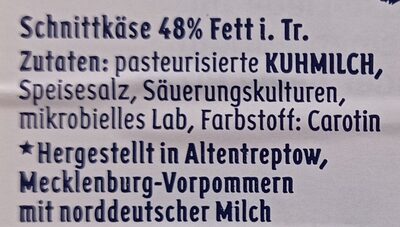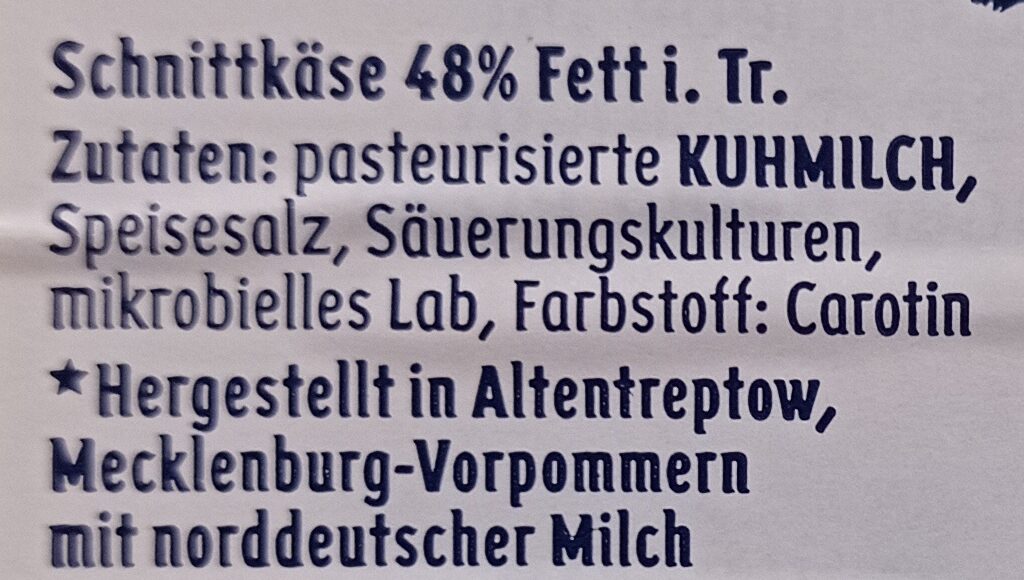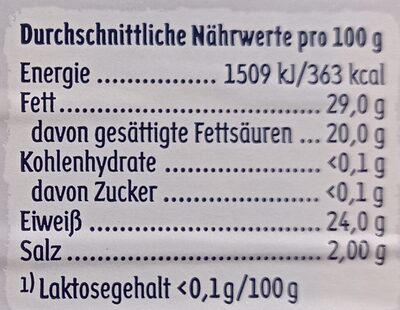Sylter Käse - Milram - 150g
This product page is not complete. You can help to complete it by editing it and adding more data from the photos we have, or by taking more photos using the app for Android or iPhone/iPad. Thank you!
×
Barcode: 4036300005298 (EAN / EAN-13)
Common name: Schnittkäse in Scheiben, 48% Fett i. Tr.
Quantity: 150g
Packaging: Plastic
Brands: Milram
Categories: Dairies, Fermented foods, Fermented milk products, Cheeses, Sliced cheeses
Labels, certifications, awards: No gluten, Vegetarian
Manufacturing or processing places: Nordhackstedt, Schleswig-Flensburg
Traceability code: DE SH 050 EG, DE NI 086 EG, DE MV-026 EG
Countries where sold: Germany
Matching with your preferences
Environment
Carbon footprint
Packaging
Transportation
Report a problem
Data sources
Product added on by citrullus28
Last edit of product page on by prepperapp.
Product page also edited by ayecptn, date-limite-app, inf, kiliweb, moon-rabbit, packbot, yuka.sY2b0xO6T85zoF3NwEKvlkBJXerZkGnjGh_StXSG4vvVI7_YRutQuaygFas.










